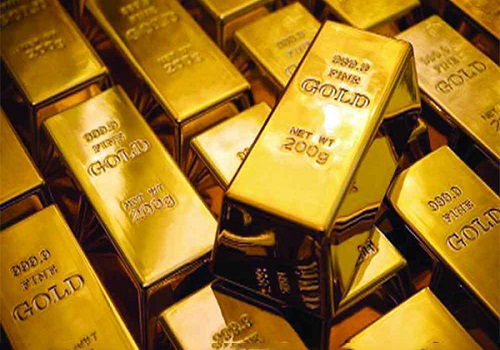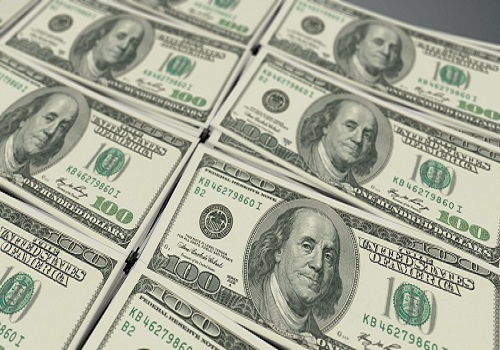Comex Gold Hits Lifetime High as U.S. Tariffs on Gold Bars Disrupt Global Bullion Flows by Amit Gupta, Kedia Advisory

Key Highlights
* Comex gold futures hit a record $3,534.10 per ounce intraday on August 7, 2025.
* U.S. imposes 39% tariff on one-kilo and 100-ounce gold bars, key formats for Comex trading.
* Switzerland, the largest gold refining hub, exported $61.5 billion in gold to the U.S. in the past year—now facing up to $24 billion in new duties.
* Indian MCX October futures reached Rs.1,02,250 per 10 grams, with domestic prices up 38% YTD.
* Central bank gold purchases expected at 900–1,000 tonnes in 2025, bolstering demand.
Comex gold surged to a lifetime high this week, propelled by a potent mix of trade policy shocks, supply disruptions, and safe-haven demand. On August 7, 2025, December 2025 gold futures climbed to $3,534.10 per ounce intraday, surpassing previous records set earlier this year. The following day, prices eased slightly to $3,393.52, but remained firmly near the upper end of historical trading ranges.
The immediate catalyst for this price surge was the U.S. government’s surprise decision to levy a 39% tariff on imports of one-kilogram and 100-ounce gold bars. Announced in a U.S. Customs and Border Protection ruling on July 31, the measure reclassified these bars under a tariff-liable code, overturning earlier expectations of exemption. The targeted bar formats are the same ones most actively traded on Comex, meaning the policy directly impacts U.S. futures market supply.
Switzerland, which refines and exports the bulk of these bars, shipped $61.5 billion worth of gold to the U.S. in the 12 months through June 2025. Under the new tariff, these flows could attract roughly $24 billion in duties, prompting some Swiss refiners to slow or halt shipments altogether. The resulting strain on U.S. bullion supply has intensified upward pressure on prices.
The tariff’s impact extends beyond the United States. Switzerland’s refineries also supply kilo bars to India, the world’s second-largest gold consumer. Reduced Swiss exports threaten to raise costs and limit availability in India, where MCX October futures surged to Rs.1,02,250 per 10 grams on August 7.
These developments coincide with an already supportive macroeconomic backdrop for gold. Persistent geopolitical tensions—exacerbated by expanded U.S. tariffs on semiconductors, Indian goods, and other imports—have driven investors toward safe-haven assets. Expectations of a dovish U.S. Federal Reserve, potentially cutting interest rates, further lower the opportunity cost of holding gold.
Structural demand from central banks has added another layer of support. Purchases in 2025 are estimated between 900 and 1,000 tonnes, marking a fourth consecutive year of large-scale accumulation. This official-sector buying provides a consistent base for demand, insulating gold from deeper price corrections.
While the U.S. tariff policy has immediate supply implications, it also signals a more protectionist stance in global trade. By targeting bullion imports—an asset class traditionally exempt from such measures—the move underscores the administration’s willingness to weaponize trade policy even in precious metals. This approach has unsettled refiners, jewellers, and investors worldwide, introducing a new dimension of risk into the gold market.
Market reactions in the past 24 hours have mirrored these uncertainties. The record Comex intraday high was followed by profit-taking, but prices remain firmly anchored above $3,390. Traders view the tariff shock as a bullish structural change rather than a short-term spike, with some Swiss refiners already redirecting shipments toward Asian markets less affected by U.S. trade rules.
In India, concerns are growing over festival season supplies. With Swiss exports under strain, local premiums over international prices may widen, adding to retail costs. For a country where gold demand is both cultural and investment-driven, higher import costs risk dampening volume but are unlikely to dent value.
The combination of geopolitical uncertainty, central bank demand, and now trade-policy-driven supply constraints has created a near-perfect storm for gold bulls. Even if tariff-related supply shocks eventually normalize, the underlying safe-haven narrative appears deeply entrenched.
In conclusion, August 2025 marks not just a record price for Comex gold but a shift in the mechanics of the global bullion trade. The U.S. 39% tariff on kilo bars has disrupted established supply chains, pressured refining hubs like Switzerland, and sent ripple effects through major importing nations such as India. Combined with macroeconomic headwinds and strong official-sector demand, these factors suggest that gold’s elevated levels may prove durable. For investors, refiners, and policymakers alike, the metal’s new highs are as much about politics and policy as they are about markets.
Above views are of the author and not of the website kindly read disclaimer










More News

Quote on Gold and Crude 03rd October 2025 by Kaynat Chainwala, AVP Commodity Research, Kotak...












